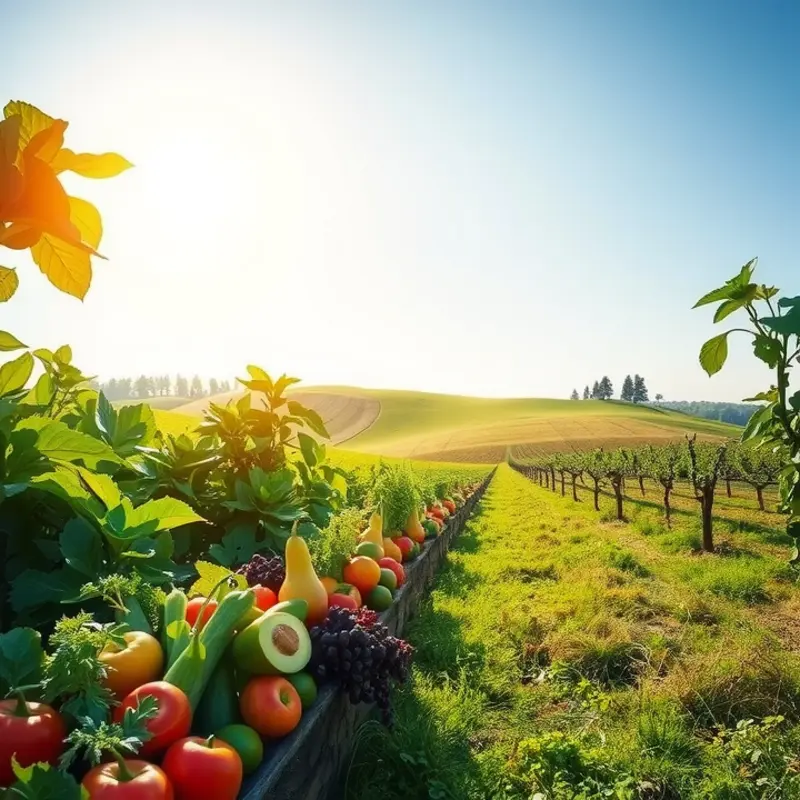Prepared salads can be a delicious and nutritious addition to our meals, but they also pose a unique challenge when it comes to spoilage. With current grocery expenses, minimizing food waste is crucial. This guide offers actionable strategies to safely store your salads, prolong their freshness, and improve your food management skills, ensuring you get the most out of your culinary efforts.
Understanding Salad Components and Their Shelf Life

The key to maintaining a fresh salad lies in understanding each component’s shelf life. Leafy greens, proteins, and dressings each contribute uniquely to spoilage but can also be combined strategically to extend a salad’s longevity.
Leafy greens are often the first to show signs of spoilage. Varieties like spinach and baby lettuce are delicate and can wilt or become slimy within a few days. Meanwhile, heartier greens like kale and romaine have a longer shelf life due to their sturdier structure. To ensure your greens are fresh, store them in airtight containers lined with paper towels. This setup wicks away excess moisture, keeping leaves crisp.
Proteins add essential nutrients to salads but can be tricky to manage when it comes to spoilage. Cooked proteins, such as chicken, tofu, or legumes, generally last three to four days in the refrigerator. However, seafood proteins, like shrimp or salmon, should be consumed within two days. To prolong their freshness, store proteins separately from salad greens and dressings. This separation not only keeps flavors distinct but also mitigates the risk of cross-moisturization that accelerates spoilage.
Dressings, though often an afterthought, play a significant role in a salad’s shelf life. Vinaigrettes fare better than creamy dressings because they don’t require refrigeration and have a longer shelf life due to vinegar’s preservative nature. However, if your dressing contains fresh ingredients like herbs, it should be used within a few days. Always dress your salad just before eating. This simple step prevents greens and proteins from becoming soggy and overly wilted.
To practice mindful storage and consumption, consider making salads in parts. Keep greens, proteins, and dressings in separate containers until you are ready to eat. By doing so, you maintain each component’s integrity and freshness. This approach not only prolongs shelf life but also makes it easier to create multiple meal combinations throughout the week.
For more tips on smart storage solutions that promote sustainability while keeping your kitchen organized, you might find valuable insights in our guide on creating an eco-smart kitchen storage.
Understanding how each ingredient contributes to salad spoilage empowers you to make thoughtful choices about your salad prep and storage. With these insights, you can enjoy fresh, crisp, and delicious salads anytime.
Efficient Storage Techniques for Prepared Salads

Maximizing the freshness of prepared salads starts with understanding efficient storage techniques. To enjoy crisp, nutrient-rich bites days after preparation, focus on proper packaging, strategic container choices, and attentive organization within your refrigerator.
Begin with packaging. After assembling your salad, ensure it is adequately dried. Excess moisture accelerates spoilage, causing leafy greens to wilt. A salad spinner can efficiently remove water residue. Once dry, wrap the salad loosely in a paper towel before placing it into its container. This helps absorb any remaining moisture while preventing wilting.
Choosing the right container is crucial. Opt for airtight containers to avoid exposure to air, which can lead to oxidation. Transparent containers are ideal as they allow you to check the freshness without opening them. Ensure the container fits the salad quantity, minimizing air pockets that can prematurely age its contents.
Dressings are an essential component, but they can quickly render a salad soggy. To avoid this, store dressings separately in small, airtight containers. Introduce dressings only at the time of consumption to maintain optimum texture and flavor.
When it comes to storage location, opt for a strategic position in your fridge. The crisper drawer, designed to moderate humidity, is perfect for leafy greens and vegetables. However, keep salads on a middle shelf where the temperature is stable, yet it maintains a slightly higher humidity level—ideal for preserving most fresh produce.
Temperature settings play a crucial role. Keep your refrigerator at or below 40°F (4°C). Cold inhibits bacterial growth, extending freshness. If you’re exploring low-waste cooking practices, you may find further guidance here.
Lastly, consider using vacuum-sealed bags, particularly for longer storage times. Vacuum-sealing extracts air, significantly reducing the risk of spoilage. While direct vacuum-sealing is not always feasible for every salad type, especially those with delicate greens, it works excellently with more robust vegetables like carrots or bell peppers.
By implementing these techniques, salads remain crisp, tasty, and nutritious well beyond their usual spoilage rates. Proper storage not only reduces waste but also ensures you can enjoy home-prepared salads anytime, with minimal hassle and maximum taste.
Final words
Minimizing the spoilage of prepared salads is achievable with a solid understanding of ingredients and effective storage techniques. By carefully selecting salad components that complement each other’s shelf lives, and utilizing proper storage methods, you can significantly extend the freshness of your meals. Embrace these practical tips to not only enjoy your salads longer but also reduce food waste. Fresh salads can remain a staple in your diet without the fear of spoilage; all it takes is a little knowledge and planning.







